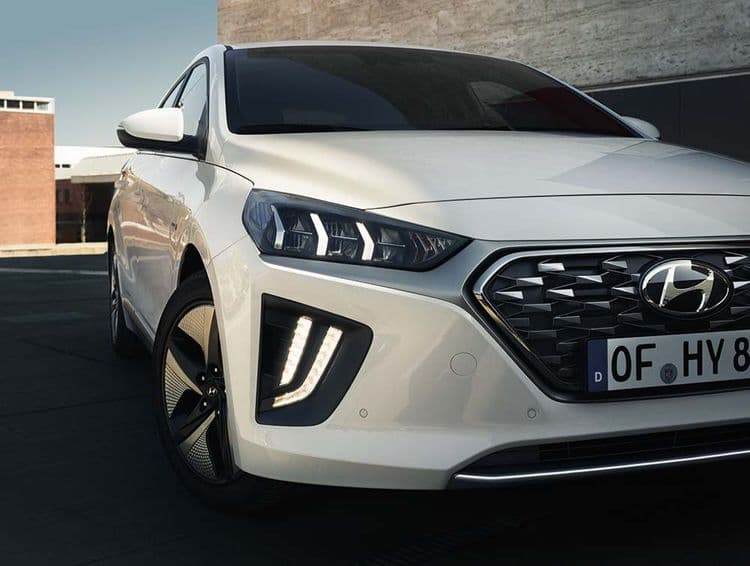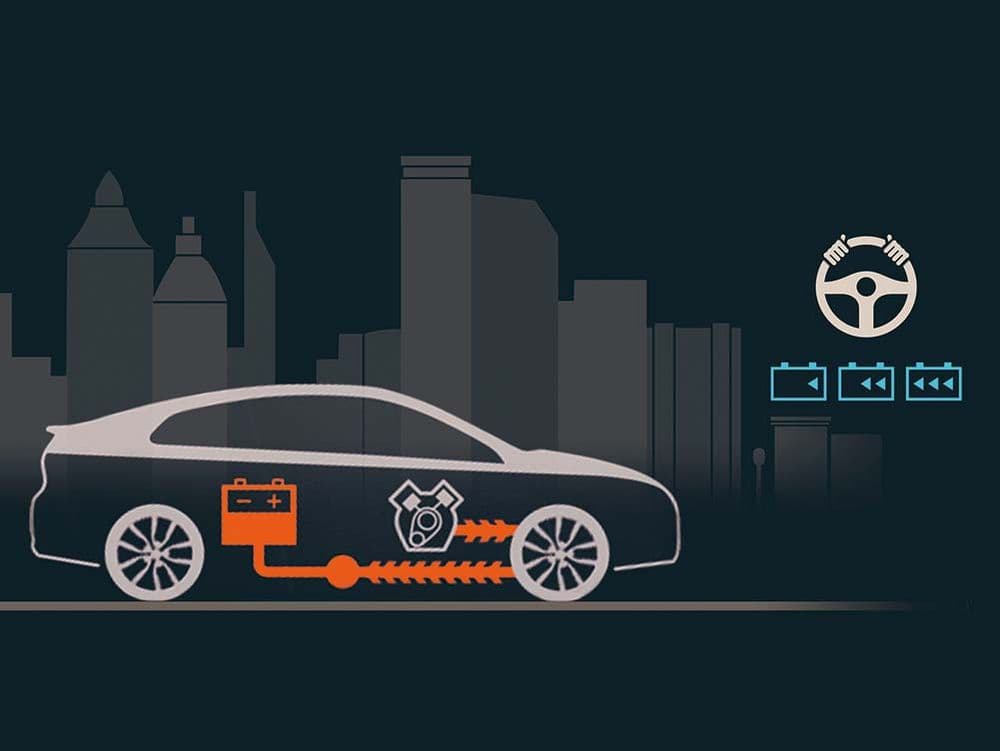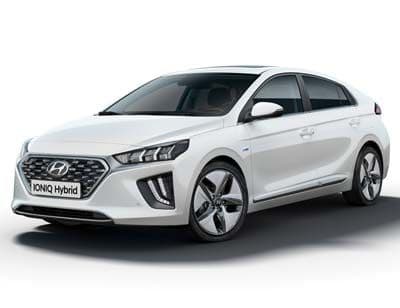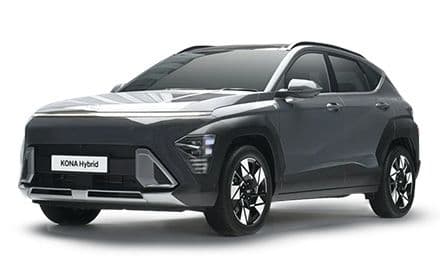
For a sustainable future
Fuel consumption (urban/ extra-urban/ combined): 3.8/ 4.5/ 4.2 [l/100 km]. CO2 emissions: 97 g/km (combined). CO2 efficiency class: A+; vehicle illustration may differ and may contain optional extras that are subject to a surcharge*. I.
Fuel consumption (urban/ extra-urban/ combined): 3.8/ 4.5/ 4.2 [l/100 km]. CO2 emissions: 97 g/km (combined). CO2 efficiency class: A+; vehicle illustration may differ and may contain optional extras that are subject to a surcharge*. I.
Our offers
No vehicles found.
State funding
To achieve the climate targets, the German government is supporting the purchase of vehicles with alternative drive systems with bonuses, tax breaks and grants to improve the charging infrastructure. Apply for your environmental bonus from BAFA when purchasing an alternative drive system.

Sie haben Fragen - wir haben Antworten
A full hybrid vehicle belongs to the group of hybrid electric vehicles, also known as hybrid cars, and combines an electric motor with an internal combustion engine. The fossil fuel remains the primary energy source in this vehicle. The built-in battery is charged exclusively via recuperation and not via an external power source.
- Fewer emissions & lower expenditure on fossil fuels
- Independent of electric charging stations
- Less noise pollution
- Higher acquisition costs
- Recharging the batteries only while driving
- Less storage space than a conventional vehicle with a combustion engine
A distinction must be made between serial and parallel hybrids. In a parallel hybrid, both engines work equally in the drive; the combustion engine does not act as a generator, as in a serial hybrid. The energy from the electric motor supports the drive to reduce fuel consumption and increase performance in the lower speed range. Both motors are located in the front of the vehicle body.
The so-called starter generator utilises the excess energy generated by rolling and braking in order to use it later to relieve the combustion engine (recuperation). The drive current is generated during the journey by the movement of the vehicle and stored in the lithium-polymer battery using lithium-ion technology.
Recuperation refers to the energy recovery that can take place when braking or rolling. The kinetic energy recovered is converted into electricity and fed back into the battery.
Lithium-ion technology is becoming increasingly important in the field of e-mobility. The main component of such a battery is a base of lithium ions, which can be combined with a variety of possible metals. The reactive materials contain lithium ions in both the positive and negative electrodes. Lithium batteries are used to store energy in motor vehicles.
A full hybrid vehicle is advantageous both for driving short distances in the city and for commuters travelling longer distances. The increased purchase costs can be offset after just a few years by the savings in fuel consumption.
Hyundai is regarded as a pioneer for alternative drive systems. With the KONAHybrid1
or the IONIQHybrid2
, a selection of full hybrids is already on offer. The expansion of the IONIQ series to become the manufacturer's own sub-brand will also stand for state-of-the-art electric and hybrid technology in the coming years. With the Outlander Plug-inHybrid3
, Mitsubishi offers a plug-in alternative to the full hybrid. At CSB Schimmel Automobile you will find all models of the Hyundai & Mitsubishi brands.
Half and annual cars
Everything under one roof
35 years of experience
Um diesen Inhalt anzeigen zu können, ist Ihre Zustimmung erforderlich.
* Weitere Informationen zum offiziellen Kraftstoffverbrauch und den offiziellen spezifischen CO2-Emissionen neuer Personenkraftwagen können dem 'Leitfaden über den Kraftstoffverbrauch, die CO2-Emissionen und den Stromverbrauch neuer Personenkraftwagen' entnommen werden, der an allen Verkaufsstellen, bei der Deutschen Automobil Treuhand GmbH (DAT), Hellmuth-Hirth-Str. 1, 73760 Ostfildern-Scharnhausen, und unter https://www.dat.de/co2/ unentgeltlich erhältlich ist. Die angegebenen Verbrauchs- und CO2-Emissionswerte wurden nach dem vorgeschriebenen WLTP-Messverfahren ermittelt.
1 Kraftstoffverbrauch in l/100 km für den Hyundai Kona Hybrid: innerorts 4,0, außerorts: 4,5, kombiniert: 4,3; CO2-Emissionen in g/km kombiniert: 99; CO2-Effizienzklasse: A+.
2 Kraftstoffverbrauch in l/100 km für den Hyundai Ioniq Hybrid: innerorts 3,8, außerorts 4,5, kombiniert 4,2; CO2-Emissionen in g/km kombiniert: 97; CO2-Effizienzklasse: A+.
3 Mitsubishi Outlander Plug-in Hybrid Gesamtverbrauch: Stromverbrauch (kWh/100 km) kombiniert 14,8. Kraftstoffverbrauch (l/100 km) kombiniert 1,8. CO2-Emission (g/km) kombiniert 40. Effizienzklasse A+.
© 2025 CSB Schimmel Automobile GmbH. All rights reserved.

Die Setzung einiger Cookies ist zwingend erforderlich. Für bestimmte Dienste benötigen wir Ihre Einwilligung.
Durch den Klick auf „Alle Cookies akzeptieren“, willigen Sie (jederzeit für die Zukunft widerruflich) in alle Datenverarbeitungen (Setzung von Cookies und Übermittlung der IP-Adresse an Partner) ein.
Durch den Klick „ Alle optionalen Cookies ablehnen“ werden alle nicht zwingend notwendigen Cookies nicht gesetzt und Verbindungen unterbunden. Die Nutzung unserer Webseite ist dann stark eingeschränkt.
Durch den Klick auf „ Lassen Sie mich wählen“ können Einstellungen geändert und der Datenverarbeitung eingewilligt werden. Ihre Auswahl kann jederzeit angepasst werden.
Hinweis auf Verarbeitung der Daten in den USA (z.B. durch Google, Facebook, Youtube): Durch den Klick auf „Alle Cookies akzeptieren" oder bei der entsprechenden Auswahl eines Anbieters, willigen Sie zugleich darin ein, dass Ihre Daten in den USA verarbeitet werden. Die USA wird als ein Land mit einem nicht ausreichenden Datenschutzniveau angesehen. Es besteht u.a. das Risiko, dass Ihre Daten durch US-Behörden, zu Kontroll- und zu Überwachungszwecken, möglicherweise auch ohne Rechtsbehelfsmöglichkeiten, verarbeitet werden können. Bei dem Klick auf „Alle optionalen Cookies ablehnen“, findet keine Datenübermittlung statt.
Weitere Informationen finden Sie unter Datenschutz. Zum Impressum.

















